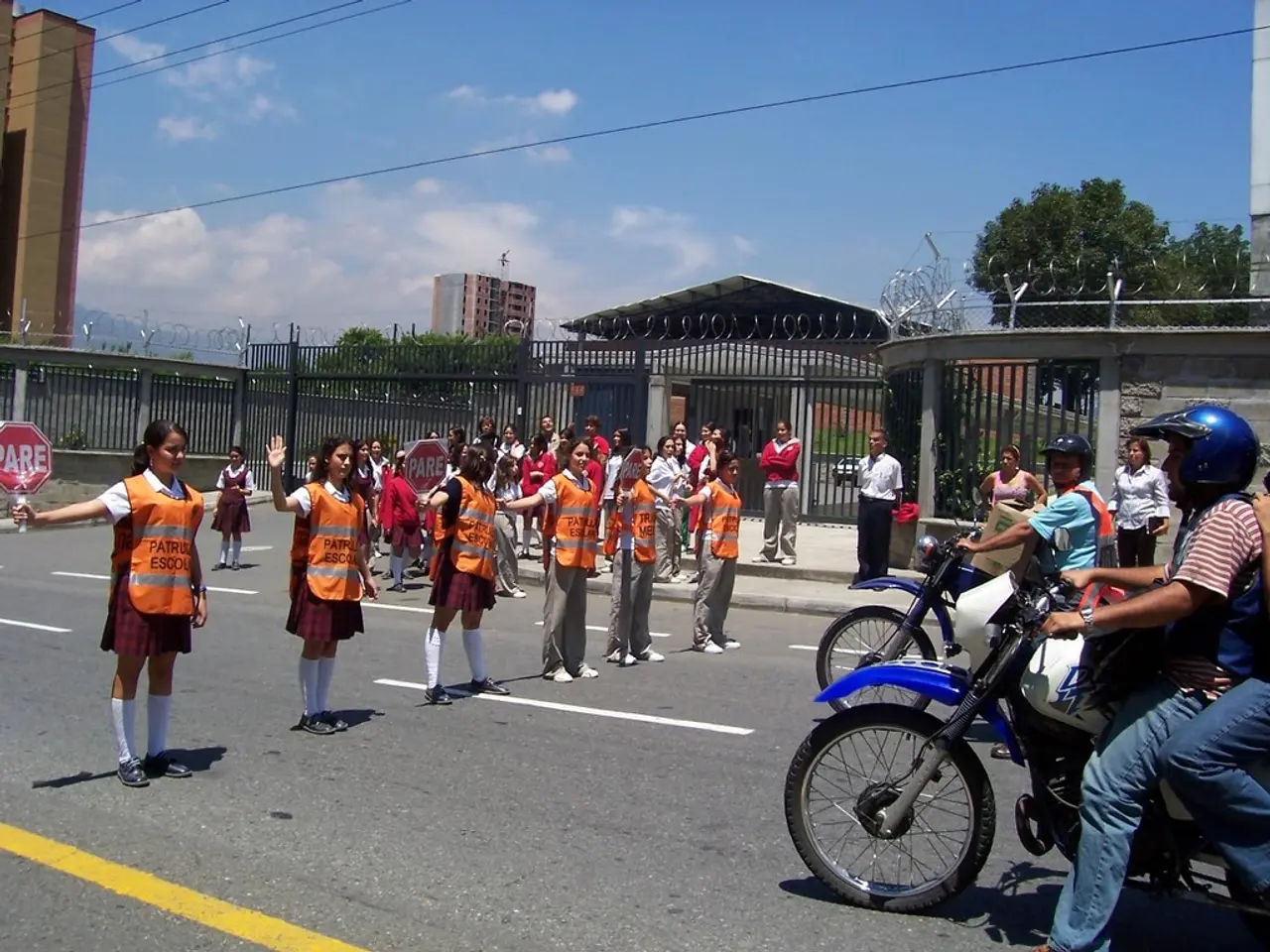guidancefor establishing School Zones
School Streets, a popular initiative aimed at making it easier for children to walk, wheel, and cycle to school, is gaining traction in England. According to guidance from Active Travel England and the Department for Transport, the key to successful planning and implementation revolves around community engagement, clearly defined operational rules, enforcement mechanisms, evidence-based benefits, and alignment with broader health and transport objectives.
School Streets create a safer environment by transforming roads outside schools into pedestrian and cycling zones during school drop-off and pick-up times. By reducing traffic speed, congestion, and pollution around school gates, these schemes contribute to improved air quality and a healthier environment for children.
The schemes typically operate during term-time at set times in the morning and afternoon. Vehicles are restricted from driving through the zone during operation, with exemptions for permit holders such as residents, school staff, or deliveries. Enforcement can be carried out manually by volunteers or with Automatic Number Plate Recognition (ANPR) cameras.
Engaging schools and local communities early in the process is crucial. Schools usually express interest via a formal process to enable evaluation and planning. Engagement with parents and residents helps ensure support and addresses concerns such as access and enforcement.
Research commissioned by Transport for London shows that School Streets can significantly reduce local air pollution and decrease the number of parents driving to school, supporting increased active travel like walking and cycling. These benefits contribute to public health goals and reduce early deaths linked to inactivity.
School Streets are part of a broader strategy to promote walking, cycling, and active lifestyles for children and their families. They are often introduced as trials with ongoing monitoring of road safety, traffic patterns, and community feedback to refine operations and consider adjustments for effectiveness and fairness.
The government's Active Travel Fund has benefitted more than 180 school streets in England. Chris Boardman, National Active Travel Commissioner, emphasizes the desire of children to walk, wheel, scoot, and cycle to school and advocates for the design of schemes to maximize fresh air and exercise opportunities for children. He believes School Streets can reduce congestion and benefit residents and businesses.
The goal is to design a scheme layout that maximizes effectiveness and minimizes undesirable impacts. Potential scheme designs include whole streets, parts of streets, or several streets around the school. The full guidance, along with relevant case studies, can be accessed online.
School selection factors include evidence of traffic-related problems, school support, and potential for active travel. Rachel Toms, Director of Urbanism at Sustrans, supports the guidance for setting up School Streets and highlights Sustrans' work in making the school run easier, cheaper, and fun for millions of children.
There is no one-size-fits-all approach to implementing School Streets; many factors must be considered. However, research suggests that active travel to school improves children's alertness, engagement in class, health, and quality time with family. Chris Boardman asserts that School Streets can help build healthy travel habits for life, contributing to a healthier, more active, and sustainable future for all.
The engagement of schools and local communities is essential for the success of School Streets, as it helps address concerns and ensure support for these initiatives. School Streets are designed to create a safer environment for children by transforming roads into pedestrian and cycling zones during school hours, reducing traffic, congestion, and pollution. By promoting active travel like walking and cycling, School Streets contribute to public health goals, such as reducing early deaths linked to inactivity, and support the government's strategy for a healthier, more active, and sustainable future.
These initiatives can also benefit the community as a whole by improving air quality, contributing to the finance sector through reduced health costs, and supporting the industry by reducing congestion and benefiting local businesses. Furthermore, education and self-development opportunities can be encouraged by incorporating learning experiences related to transportation and sustainability into the School Streets program.
Considering the various factors involved, such as scheme design, selection criteria, and enforcement mechanisms, it is crucial to create a well-rounded approach that maximizes effectiveness while minimizing undesirable impacts on residents and businesses. The government's guidance for setting up School Streets, along with relevant case studies, can be found online to help in this process.




